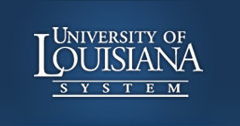Event Title
Bio-Diversity: Calculating Energy Savings for Greenlight New Orleans
Location
Hamilton Hall 115
Session
Session 5
Start Date
12-4-2014 9:30 AM
End Date
12-4-2014 10:30 AM
Description
I teach two large sections of Biodiversity, both primarily aimed at freshmen. One is for Biology majors (BIOS 1073), and one is for non-majors (BIOS 1063). Each includes segments on climate change, sea-level rise, and coastal erosion. In coastal Louisiana, I think of these topics as particularly relevant for service learning, so as part of their class requirements, I give my students the opportunity to volunteer for class credit on local projects related to these issues. (Many of the students who have volunteered for these projects have gone on to join the Biology Club, a service club for which I serve as the faculty adviser. The club has conducted environmental education on campus and elsewhere and does further volunteering as well.) Many of these projects have involved environmental restoration, such as planting marsh grasses. Others have helped with environmental remediation, and improving energy efficiency, such as with Greenlight New Orleans, an organization that installs free energy-efficient light bulbs and backyard vegetable gardens in New Orleans residences. About two dozen students in the fall semester volunteered for this organization. For academic work, I direct students to an online carbon footprint calculator to consider how much of a difference they can make as individuals, working together with their families and communities. The final lecture of these classes includes these topics in a question/answer session and class discussion.
Bio-Diversity: Calculating Energy Savings for Greenlight New Orleans
Hamilton Hall 115
I teach two large sections of Biodiversity, both primarily aimed at freshmen. One is for Biology majors (BIOS 1073), and one is for non-majors (BIOS 1063). Each includes segments on climate change, sea-level rise, and coastal erosion. In coastal Louisiana, I think of these topics as particularly relevant for service learning, so as part of their class requirements, I give my students the opportunity to volunteer for class credit on local projects related to these issues. (Many of the students who have volunteered for these projects have gone on to join the Biology Club, a service club for which I serve as the faculty adviser. The club has conducted environmental education on campus and elsewhere and does further volunteering as well.) Many of these projects have involved environmental restoration, such as planting marsh grasses. Others have helped with environmental remediation, and improving energy efficiency, such as with Greenlight New Orleans, an organization that installs free energy-efficient light bulbs and backyard vegetable gardens in New Orleans residences. About two dozen students in the fall semester volunteered for this organization. For academic work, I direct students to an online carbon footprint calculator to consider how much of a difference they can make as individuals, working together with their families and communities. The final lecture of these classes includes these topics in a question/answer session and class discussion.
